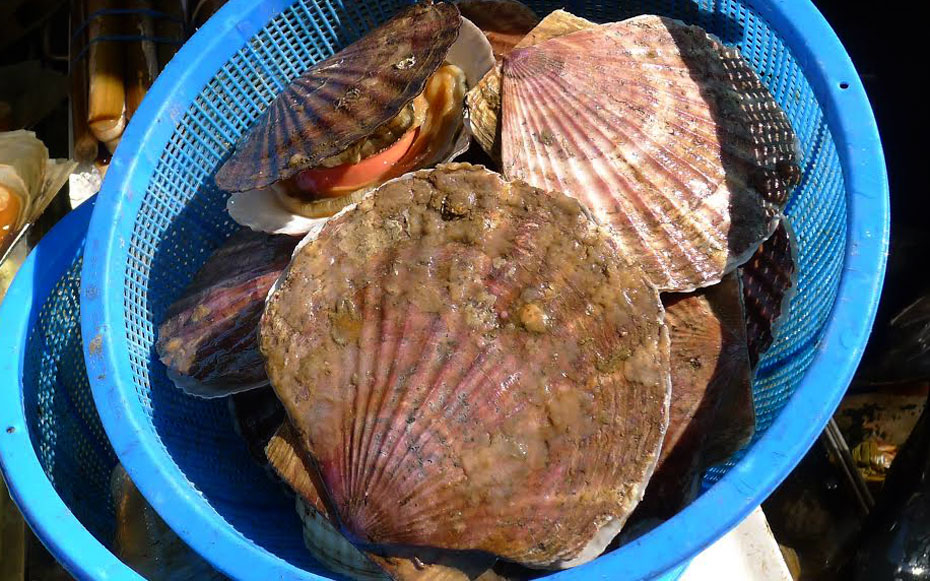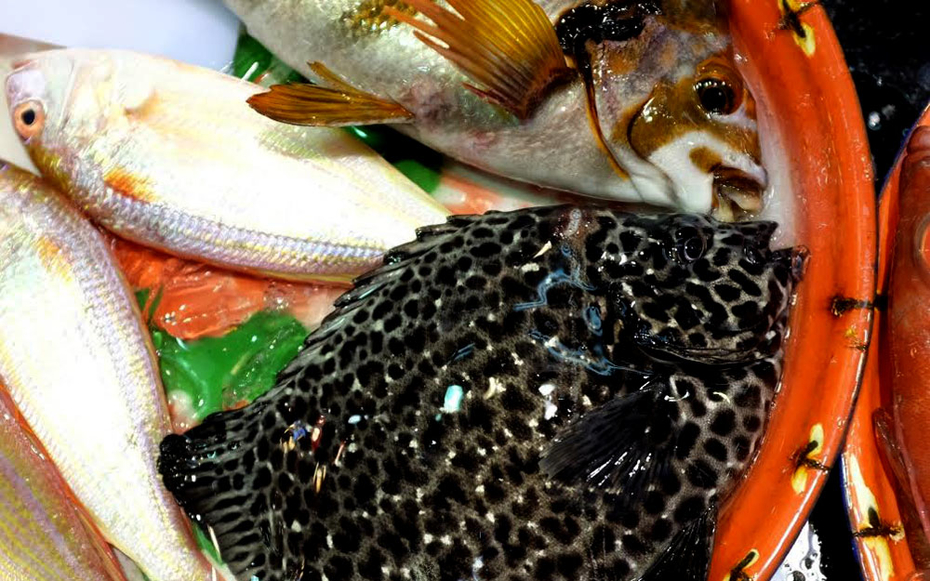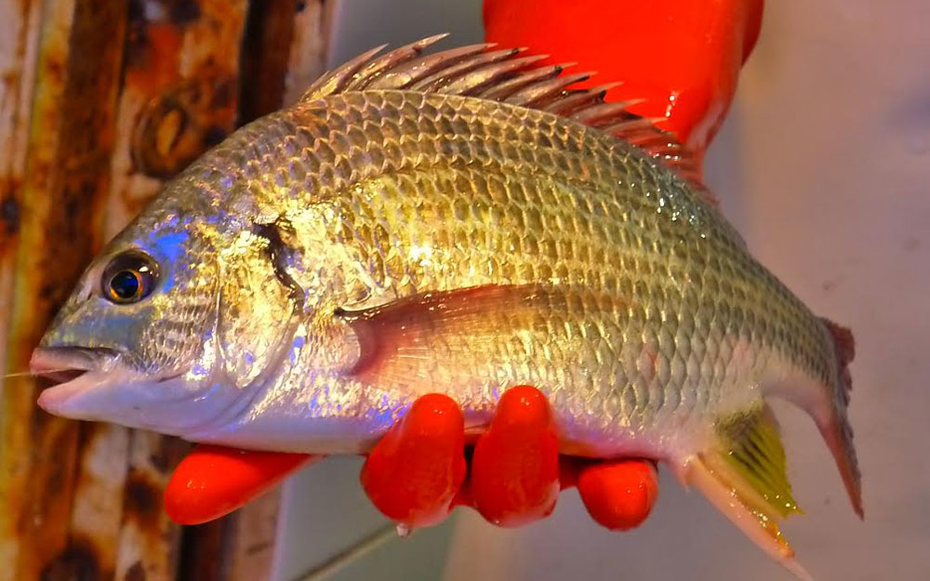
Hong Kong chef and seafood master David Lai gives us his top tips for shopping and exploring local fish markets.
In Hong Kong’s Sai Ying Pun neighborhood, new seafood restaurant Fish School pays homage to an important piece of local heritage: the bustling wet markets, where vendors hawk everything from giant threadfin salmon to live crab, all hauled in fresh each morning.
The concept evokes the city’s rich history of trading, thanks to its location along the South China Sea. “Hong Kong began as a fishing village,” chef and co-owner David Lai told T+L. “And a lot of that tradition remains, even though it happens on a smaller scale. Many fishermen families still go out to sea and bring their catches directly to the wet markets. This rarely happens in big cities anymore.”
Lai was born in Hong Kong, but trained in the San Francisco Bay Area. He returned to his hometown to work under Michelin-starred chef Alain Ducasse at Spoon at the Intercontinental Hong Kong before launching his own restaurants. Since returning to his native city, Lai has also cultivated deep ties with local fishermen, from whom he sources impeccable ingredients for Fish School’s menu, which features unique Western-style twists on classic Hong Kong seafood like cuttlefish tagliatelle and monkfish liver with foie gras pressé.
Below, Lai’s tips on how to shop at a Hong Kong wet market like a local:
Ap Lei Chau Market, located on Ap Lei Chau Island in Aberdeen Harbour, is great because there’s a good range of seafood available and it’s relatively clean and accessible without being touristy. People can buy seafood on the ground floor and then bring it to of the restaurants upstairs to be cooked.

I look for places that sell wild local fish. In a typical market, 70% of the fish are farm-raised and another 20% are imported. There’s nothing inherently wrong with farmed fish but the ones commonly available are often raised with low cost in mind. It takes a bit of experience to figure out which is which, as there are no easy ways to tell.
Look for the busiest shop and observe what other people are buying. These businesses are usually busy for good reasons.
Most fish are seasonal. Throughout the year we see different kinds of fish coming and going. For example, we see many flounders in the first few months of the year and then they disappear. In the summer, when it gets warm, the crabs are most active. In the fall, we have yellow croakers, and then we move on to thread fins and sea bass and so on.

Sea breams are more common in Hong Kong and it is one of my favorite fish. It has robust flavor and texture. At the restaurant we bake it gently in sea salt to preserve its character.
I love moray eel; it’s really rich and fatty. It’s not a commercially valuable species so I see them only a few times a year. The fish has a lot of bones so it’s not easy to sell; most of the time I keep it for myself.